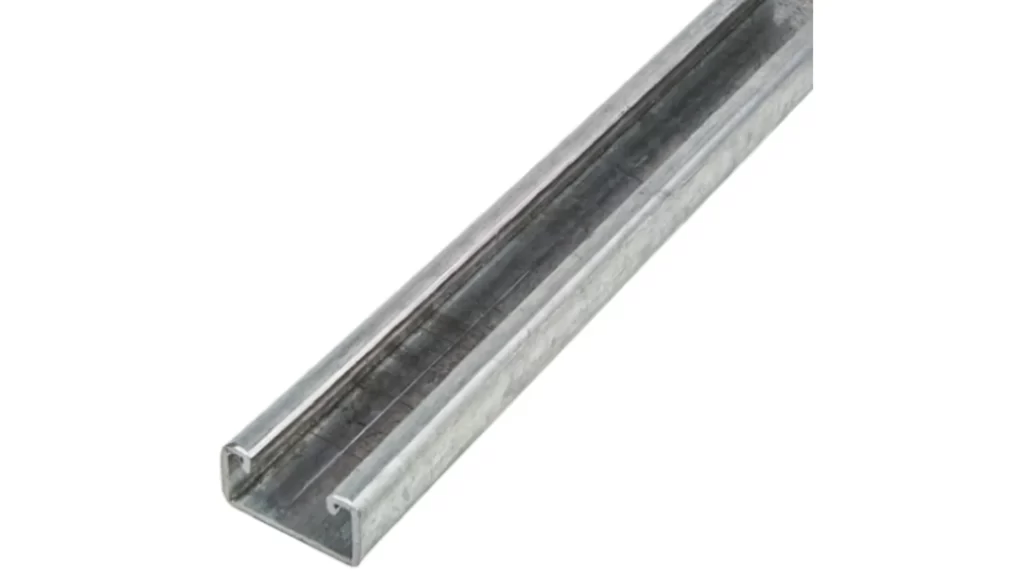Metal channels are made by converting metal into linear roll formed channel shapes using high speed roll forming. The shapes and dimensions of roll formed channels are determined by the needs of the application in which they will be utilized. Metal channels’ primary tasks include constant support and reinforcement of other components.
Metal channels are designed from the ground up with a base known as the web, which has legs on either side. The metal strips are shaped into various forms that are carefully intended for specific applications during the roll forming process. Despite the fact that C channels are the most frequent type of metal channel. The term C channel is a broad descriptor that refers to a variety of profiles and designs.
C Channel
C channels are a popular type of metal channel that is frequently utilized in construction as building, wall, roof, and ceiling supports. Because sheet metal can be roll formed to match any precise specifications, the name C channel embraces a wide range of channel forms, dimensions, and sizes.
The term C channel refers to the metal’s roll formed profile, which bears the shape of a C. A C channel is formed by combining a U shape with flanges on both sides. The flanges are entirely crimped back on the sidewalls in some situations to form a crimped C channel. There are an infinite number of C channels that come in a wide variety of shapes and forms to meet the needs of varied applications.
Hat Channels
Hat channels have a base with straight up or angled sides. The borders of the sides flare out from the center, giving the profile impression of a wide-brimmed hat setting on its crown. A hat channel, like a C channel, begins as a U shape during the first roll forming process, after which the top edges are bent outward.
Hat channels’ construction and shape make them suitable for use in roof framing, earning them the alternate term hat purlins, a longitudinal, horizontal structural element of a roof. Hat channels come in conventional lengths of 20 feet, although custom lengths are available.
U Channel
Two right angles are made on a flat piece of metal that has been roll shaped to give it the distinctive shape of U channels. Like other types of metal channels, U-shaped channels come in a wide range of sizes and shapes with flat or rounded bottoms and sides that range in thickness from a few inches to several inches. Depending on how the U channel will be used, the width of the bottom and the height of the right-angled sides will change.
J Channels
A J channel is configured by making one of the channel’s sides longer than the other, which results in a profile that resembles the letter J. There are numerous types of J channels that are created to fulfill a range of application requirements, even if the fundamental J channel comes in a number of sizes and purposes.
The straightforward J channel without a hem, the J channel with a hemmed type, and the J channel with a flat piece that may be screwed or nailed on are the three most popular types. J channels are offered in a variety of lengths, ranging from a few feet to over 20 feet, just like other types of metal channels.
To know other construction guides, tips, and methodology for beginners, veterans, and contractors, please see here.
To know the flood prone areas in the Philippines, Top 10 Flood-Prone Areas to Live in the Philippines.
To know more about Concrete Hollow Blocks, Simple Reasons Why Hollow Blocks are Highly Used in the Philippines
To know more about Hammers and Nails, Tips for Guaranteed Best Technique for Hammering Nails
To know more about Tees and Wyes, What is the Guaranteed Best to Use: Sanitary Tee Vs Wye

